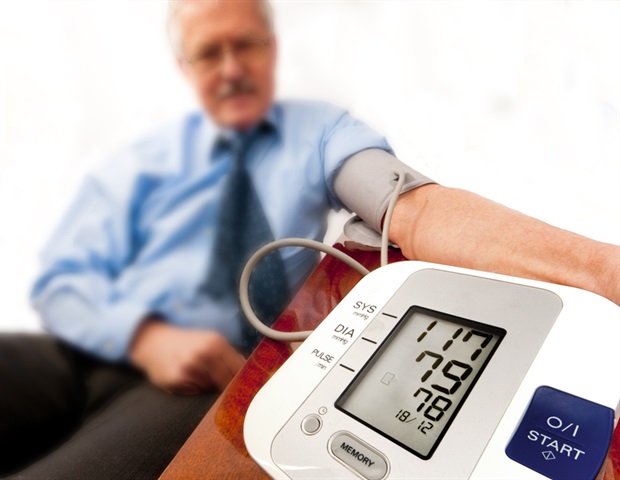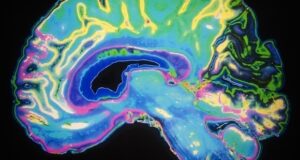
Neutropenia is a condition in which there are not enough neutrophils, a type of white blood cell, in the blood. Neutrophils are essential for the body’s defence against infection, destroying bacteria and viruses. Early diagnosis of neutropenia allows for more effective patient care, prevention of infections and timely treatment of patients. This is why the research into neutropenia carried out by the COST Action European Network for Innovative Diagnosis and Treatment of Chronic Neutropenias (EuNet-INNOCHRON) is so important.
Professor Helen Papadaki of the University of Crete, Chair of the Action, gives an overview of neutropenia, the Action’s efforts to prevent its progression to acute leukaemia, and the new areas of research that have emerged in this field.
Understanding neutropenia: causes and recommendations
Signs and symptoms of neutropenia include fever, painful swallowing, sore gums, skin abscesses and ear infections. Children may be irritable and have difficulty feeding. Low blood pressure (hypotension) may also occur in people with neutropenia.
Neutropenia can be either acquired or congenital. Acquired neutropenia can be caused by several factors, including infections, autoimmune diseases, drug exposure, nutritional deficiencies, enlarged spleen or blood disorders. “Today we have many tools to investigate the causes of acquired neutropenia,” says Prof. Helen Papadaki. “Finding a disease associated with neutropenia can help treat both the disease and the neutropenia. However, acquired idiopathic neutropenia, where no cause is found, is the most challenging”.
To prevent acquired neutropenia, it is important not to take any drugs or substances, including natural supplements, without medical advice. It is also important to eat a balanced diet rich in B12, folic acid, iron and copper to prevent nutritional deficiencies.
Congenital neutropenia is an inherited condition that causes frequent infections and sometimes more serious health problems with the immune system or metabolism. It can increase the risk of serious blood disorders, such as problems making blood cells and a type of blood cancer called acute myeloid leukaemia. However, a mild form of neutropenia called ADAN, which is common in people of African and Middle Eastern descent, does not lead to leukaemia.
“Our work in EuNet-INNOCHRON showed that adults with idiopathic neutropenia and mutations in genes related to blood diseases (a condition called clonal haemopoiesis) are more likely to develop serious blood disorders like myelodysplastic syndromes and acute myeloid leukaemia”, explains Helen. “Therefore, using advanced gene sequencing to investigate idiopathic neutropenia is essential. Identifying clonal haemopoiesis means these patients need close monitoring to catch any early signs of cancer”.
Knowing if someone has congenital neutropenia can help protect their family and give important genetic advice before having children. Furthermore, it ensures that mothers receive the appropriate care during pregnancy.
EuNet-INNOCHRON’s achievements in neutropenia research
According to Prof. Helen Papadaki: “The EuNet-INNOCHRON Action developed into a very successful network and interactive community, thanks to many dedicated scientists who looked into current and future aspects of neutropenia”.
The EuNet-INNOCHRON Action brought together doctors and researchers from 35 countries to disseminate knowledge about this condition. This collaboration, with the support of the European Haematology Association, has led to significant improvements in the recognition, diagnosis, and treatment of neutropenia patients worldwide.
The Action has produced numerous publications in prestigious journals. Particularly important are the Common EU Guidelines on diagnosing and managing Neutropenia jointly published by EuNET-INNOCHRON and the European Haematology Association. These guidelines that benefit patients, families, doctors, and healthcare systems globally were developed with experts from Europe and the United States. They are crucial for standardising the diagnosis and treatment of chronic neutropenia. The guidelines emphasise the value of combining traditional tests with newer genetic analyses to gain a deeper understanding of the disease.
“Thanks to the Action work, patients have a better chance of receiving proper treatment”, says Helen. “Furthermore, we have at our fingertips big data to harvest information critical to define treatments including the molecular structure of the disease, biomarkers and other parameters which aid in the prevention, diagnosis and proper monitoring of the patient’s condition”.
EuNet-INNOCHRON has also developed common protocols for biobanking patient samples and registering patients for accurate diagnosis using advanced techniques. This unified approach, in particular in countries with fewer diagnostic resources, offers two key benefits: improved patient outcomes and the advancement of research and treatment in the field of neutropenia.
EuNet-INNOCHRON empowers young researchers
Equally important is the training opportunity offered to many young clinicians and researchers across the EU, particularly those from Inclusiveness Target Countries and neighbouring countries. The Action meetings provided a platform for young investigators to learn from top experts in neutropenia research, participate in oral and poster presentations, and develop collaborative research proposals. Special meetings in Genova, Palermo, and Verona enabled early-career investigators to focus on specific topics and present their findings.
COST Short-Term Scientific Missions and Training Schools enabled Young Researchers to gain the necessary skills to conduct more effective investigations and treatments for neutropenia. The Young EuNet-INNOCHRON group, led by Maksim Klimiankou and Valentino Bezzerri, provided an invaluable opportunity for young scientists to participate in research and discussions.
“Through these initiatives, EuNet-INNOCHRON fostered a collaborative and supportive environment among young researchers, encouraging friendships and future collaborations beyond the Action’s duration. By giving such opportunities to young investigators, we believe that EuNet-INNOCHRON has prepared the next generation of experts in the field of neutropenia“, explains Prof. Papadaki.
Helen’s highlights
“There were so many nice memorable moments within the EuNet-INNOCHRON family!” highlights the Action Chair. “The Action’s successful transition to an online platform because of the COVID-19 pandemic, showcased our spirit of collaboration and enthusiasm that defined our Action’s journey”.
Another memorable experience, according to Helen, was the final meeting in Chania, Crete, in April 2024. 90 researchers from 22 countries gathered along with patient representatives and stakeholders. “This high-level event fostered a friendly atmosphere and emotional moments, solidifying our commitment to continued collaboration. Hosting the conference in Chania also raised local awareness about this rare disease and showcased our EU-level work. Overall, these experiences underscored our evolution from a group of researchers to a unified community advancing neutropenia research. We are now preparing to apply for a new COST Action, grateful for COST support in our journey”, concludes the Chair.




